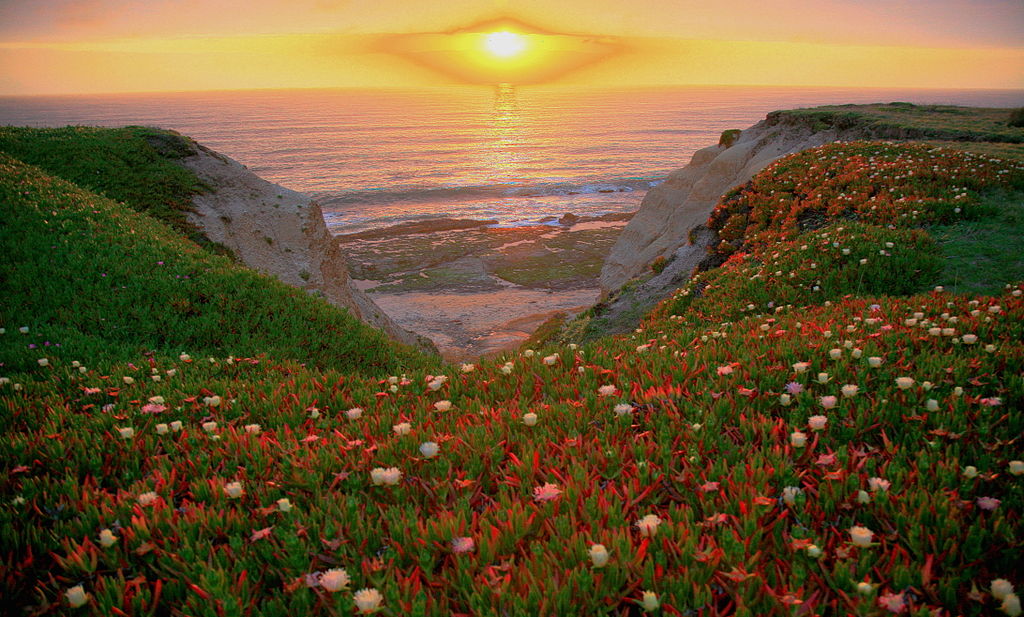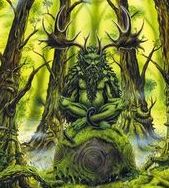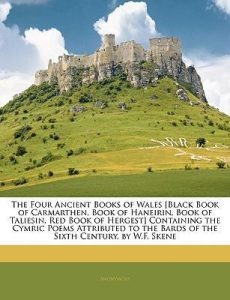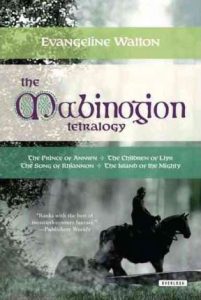
The ‘Celtic Otherworld’ is a world apart from the one which we know and live in. It is a hidden, magical place inhabited by mysterious and magical people and beings. The laws of physics are totally different to those in our world. It is little wonder that it confounds our concepts of space and time.
The hidden nature of this world resulted in our ancestors envisaging so many different geological locations for this world. It became a place that was located on islands that materialised out to the West. Or was hidden amongst hills or atop mountains or in the deepest, darkest places in the forest.
Annwn in Welsh Mythology
The Welsh Mythologies are to be found predominantly in the ‘Ancient Manuscripts of Wales’. These are the Black Book of Carmarthen. The Red Book of Hergest and the White Book of Rydderch. The Book of Taliesin and the the Book of Aneirin. They are a collection of manuscripts containing prose and poetry recorded in written form from earlier oral sources. These Welsh mythologies; like their Irish counterparts have many incidences of heroes travelling to, or raiding the Otherworld for its riches and/or knowledge.
Preiddeu (spoils of) Annwn (or Annwfn) is a cryptic poem of sixty lines, found in the book of Taliesin. Attributed as written in Middle Welsh but more than likely written in the Cumbric (now defunct) dialect. This recounts a journey made by King Arthur to Annwn purportedly to raid its spoils. It is one of the earliest mentions of King Arthur. Annwn it would seem is referred to by several names. Including ‘Mound or Fairy Fortress’,’ Four Peaked or Cornered Fortress’ and ‘Glass Fortress’.
The surviving manuscripts all date from the 13th, 14th and 15th C and were scribed by monks. We need to be aware of any ‘Christianisation’ of these tales by the scribes.
Insights Into Annwn
These Mythologies do however give us a lot of information about Annwn. Its rulers/Kings; Arawn to start and later Gwyn ap Nudd and other inhabitants were superior beings. They were not to be trifled with from our world. There are tales of opulent feasts and entertainment for guests that far outweigh anything that can be offered in this world. The impression is given that abilities (magical or not) are well beyond human reach.
Annwn; a land of eternal youth and delights where disease is absent and food ever abundant is the home of Gods & Goddesses and the Fae.

Otherworldly creatures and maybe much more reside here. As the ‘Celtic’ landscape is littered with non-human beings who live in worlds (different realities or realms) other than that in which WE reside.
These non-human beings are to be found in Faerie Stories and folk-lore. They are associated with magic and astonishing skills/craftsmanship. These are the elves, dwarfs and gnomes to name but a few. The worlds in which they live are never named so that we do not know if it is the same Otherworld. Or maybe there are many Otherworlds?
Recommended Reading – All books are available from AbeBooks
Energy, Frequency and Vibration
Nikola Tesla (Physicist 1856-1943) is attributed with saying “If you want to find the secrets of the universe, think in terms of energy, frequency and vibration”.
Are ALL realms (worlds) are in the same geographical space, and it is only the different frequencies and vibrational rates at which they operate that separates them? Are there special times or indeed special places where, by some freak of physics, these frequencies and vibrations are able to achieve a ‘crossover point’? A point at which they can interact with each other? Places that are known as ‘Thin Places‘ may be just such points. Called ‘thin’ because the dividing line between their energies is indeed very thin.
Tales in which Annwn appears
Pwyll, Prince of Dyfed; Pwyll wrongly chases Arawn’s hunting dogs and allows his own hounds to have the kill of a stag that they had brought down. For this he has to pay Otherworldly penance. What part of ‘crossing’ the owner of white dogs with red ears did he think was a good idea? Everyone knows that white animals with red ears are ‘Otherworld’ animals. Never mess with white animals with red ears (or their owner).
Cad Goddeu; is a mythological epic poem concerning a battle between Gwynedd and the forces of Annwn (again led by Arawn). In this Gwydion; a magician, hero & trickster defeats Arawn by enchanting the trees to rise up and fight.
Preiddeu Annwn; an early poem found in ‘The Book of Taliesin’ offers insights into connecting with Otherworld and the gifts that can be received. It also contains sound advice; ‘do not rate the little men of letters, for they will never understand’. This is referring to the knowledge of the Otherworld and those who have been indoctrinated/brainwashed by the teachings of the ‘system’.
Over time the role of ‘King’ of the Otherworld was transferred to Gwyn ap Nudd. Around whom the tradition of ‘leader of the Wild Hunt’ with his spectral hounds the Cwn Annwn (Hounds of Annwn) revolves. It is those white hounds with red ears again!. Gwyn’s role as leader of the Wild Hunt is to collect the lost souls of the dead and assist them in returning to the Otherworld.
You might also like to read “Gwyn ap Nudd” on the Dunbrython.org web-site.


